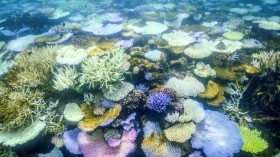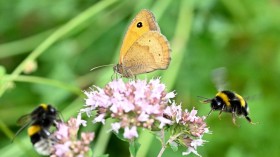Amid climate change in the US Southwest region, the desert tortoise may fare well, but most other reptile, as well as bird, species living in the area will face a dramatic loss of livable habitat, according to new research.
The US Geological Survey, along with researchers from the University of New Mexico and Northern Arizona University, have forecast a nearly 50 percent distribution loss for the reptiles studied and as much as 80 percent distribution loss for birds. Distribution is defined as where species are able to live.
Five reptiles native to the US Southwest were included in the study, and all but one - the threatened Sonoran desert tortoise - is expected to face a nearly 50 percent distribution loss. Populations of Arizona black rattlesnake, common lesser earless lizard, chuckwalla and plateau striped whiptail are expected to decline.
For birds, there are some winners, but some losers as well. Black-throated sparrows and gray vireos are projected to experience major gains in breeding habitat, but other species, including pinyon jays, Williamson sapsuckers, pygmy nuthatches and sage thrashers, are forecasted to experiecne large losses in breeding habitat, and, perhaps, a related population decline.
"Not surprisingly, whether a species is projected to be a winner or a loser depends primarily on its natural history and habitat needs and requirements," said lead study author Charles van Riper III, a USGS scientists. "Land managers should be aware of these potential changes so that they can adjust their management practices accordingly."
Seven southwestern bird species and five reptile species were included in the study, which focused on the Sonoran Desert and Colorado Plateau ecosystems within Arizona, western New Mexico, Utah, southwestern Colorado and southeastern California.
In this region, precipitation is expected to decline by 5-20 percent in the next 60-90 years, and temperatures are expected to increase by 6.3-7.2 degrees Fahrenheit (3.5-4°C).
"Changes of this magnitude may have profound effects on distribution and viability of many species," said Stephen Jackson, director of the Interior Department's Southwest Climate Science Center. "Temperature matters a lot, biologically, in arid and semi-arid regions."
A copy of the study, Projecting climate effects on birds and reptiles of the southwestern United States, is available here.
© 2024 NatureWorldNews.com All rights reserved. Do not reproduce without permission.

![Microplastics Escape Body's Gut to 'Infiltrate' the Brain, Kidneys and Liver [Study]](https://1471793142.rsc.cdn77.org/data/thumbs/full/70195/280/157/50/40/microplastics-escape-bodys-gut-to-infiltrate-the-brain-kidneys-and-liver-study.jpg)



